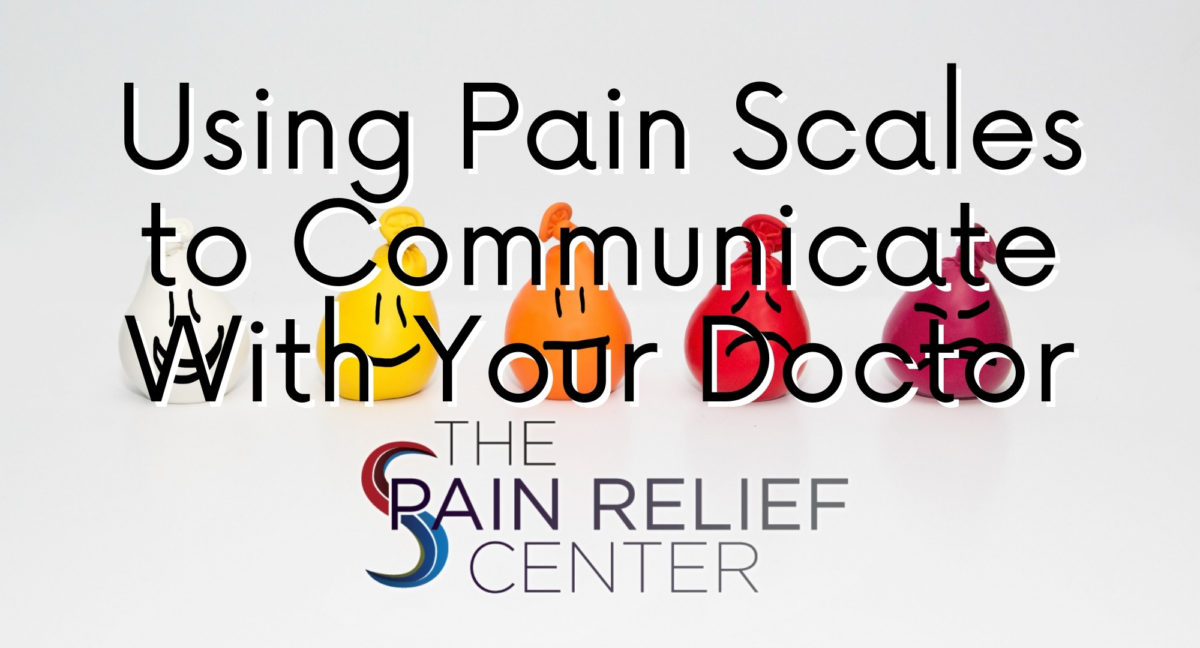Patients with chronic pain are often misunderstood by their family members, friends and even physicians, as humans perceive pain and react to pain differently from one another. Some may downplay the patient’s pain on the basis of the patient’s failure to mention the hurt or display anguish. Those the patient may trust the most may end up showing the strongest sense of disbelief about the patient’s chronic pain, which can further depression and loneliness. However, physicians can help to place pain in numerical or linguistic fashion by using various types of pain scales so physicians can more easily understand the type and strength of the pain.
What Are Pain Scales?
Pain scales are sets of criteria on which patients can base their pain using numbers, like choosing a number on a scale of one to 10, or words, like choosing a description that best describes their pain. Using pain scales can help physicians pinpoint the cause of the pain and understand the severity of the pain in order to prescribe the correct medication. Pain scales can also be used to observe pain trends; effectiveness of treatments can be measured based on the frequency of the pain and whether a certain amount of pain has subsided or increased. Pain scales tend to be subjective, but the patient can choose the worst pain he or she has experienced, like childbirth, and use it as a starting point to make it easier to determine the severity of pain relative to the patient’s worst pain. Describing how the pain feels, like an ache as opposed to a sharp pain, can help the doctor determine from which body part the pain is stemming. Also, informing the doctor of how the pain affects one’s life, like loss of the ability to concentrate due to the hurt, can heighten the accuracy of the measurement of pain.
Pain scales can be based on verbal responses, like using words to describe the pain, or observation, such as identifying pain in patients who cannot communicate by noticing facial expressions, body language and heart rate. One of the most common pain scales is the number pain scale in which pain intensity and pain distress can be measured in terms of zero to 10. On a pain intensity number scale, a rating of zero indicates no pain, a rating of five means pain is moderate and a rating of 10 is the highest degree of pain. The Wong-Baker FACES pain rating scale, another common pain measurement tool, shows pictures of facial expressions to describe pain. A patient with no pain would choose the first face that is smiling. A patient with moderate pain may pick the middle face with a slight frown and furrowed brow, and a patient in severe pain would choose the last face, displaying tears and a look of agony.
Some pain scales are more detailed, examining the patient’s pain history, current treatments and lifestyle. An interpretive pain report includes a validity report, which factors patient anxiety and depression, and clinical interpretations, including treatment and surgery information. A patient comfort assessment guide describes the pain by accounting for pain frequency, medicine and the physical, mental and social effects of the pain. Some pain scales break down the pain description even further, like the daily pain diary, which tracks pain patterns each hour. Though physicians, physical therapists and psychologists can work together to achieve pain relief for a patient, the patient is perhaps the most important member of the team. While others can prescribe medicine and facilitate exercise, the patient ultimately decides which medicine is most effective and adjusts his or her state of mind to one of positivity and strong determination to improve the current condition.
For more information, or to talk with a doctor about chronic pain management, contact the Pain Relief Center in Plano, TX.


